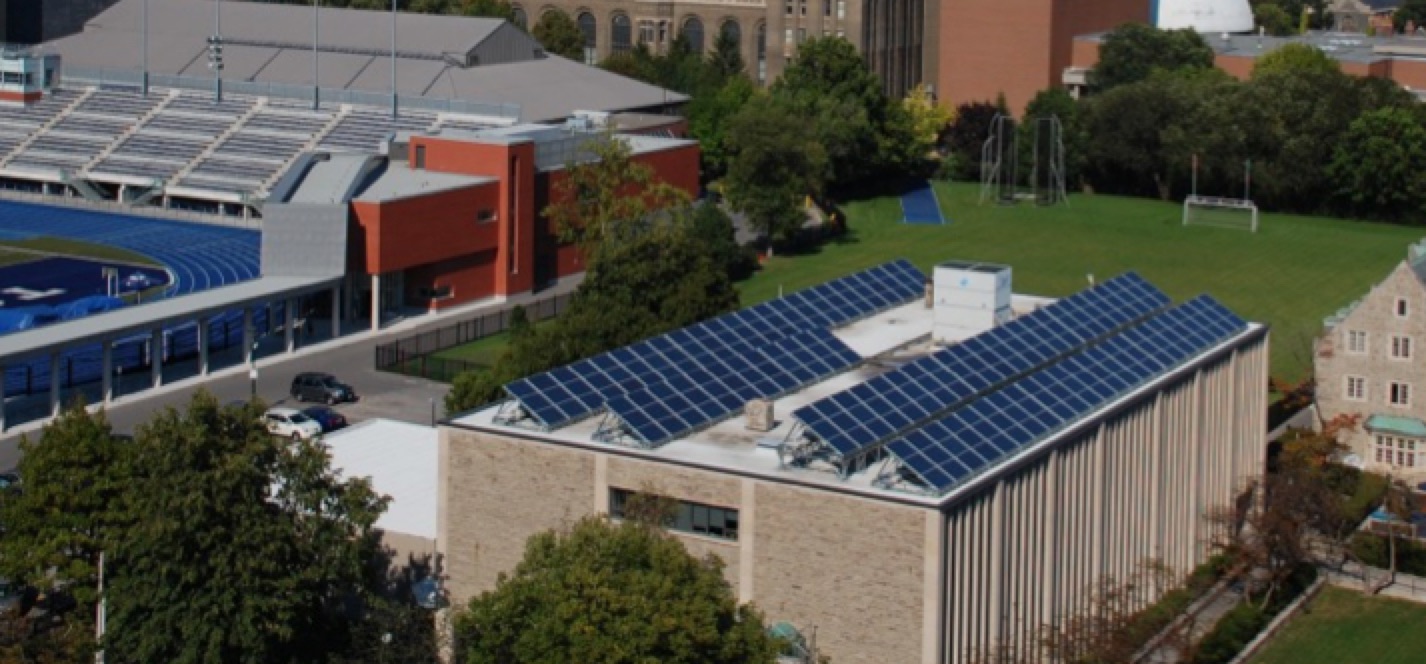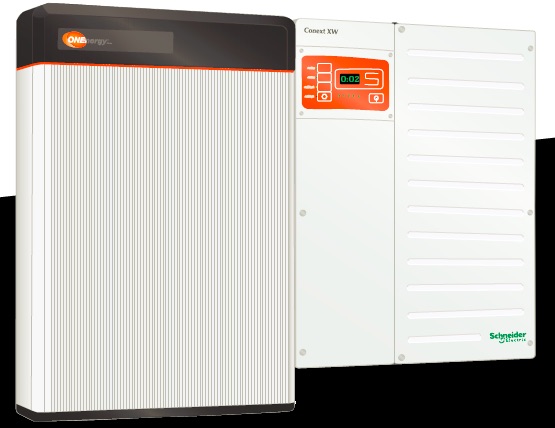Canada's Largest University Converts to Solar Energy
In recent years, the University of Toronto has stepped up its efforts to reduce its usage of fossils fuels, and convert its campus buildings to solar energy. Last year, the University placed solar panels on the roof of a building in the center of the downtown campus, that's been used as the Exam Centre. The electricity generated by these solar panels will be fed into the Exam Centre to offset its regular day-to-day electrical energy use. The PV panels, which are expected to last three decades, help offset the normal electricity supplied to the building by Toronto Hydro. Although the Utility makes up for any power shortfalls, whenever the sun is shining, the University is able to purchase less electricity overall. This solar system provides around 75,000 kilowatt hours, almost eight times more energy than an average Toronto home needs each year.
 The entire project is part of the University's on-going energy conversion to solar. The school boasts other on-campus solar energy systems, such as the Green Roof Innovation lab at John H. Daniels Faculty of Architecture, Landscape, and Design; which is a 10 kilowatt system used for research, as well as proving power to the building. The Mining Building gets part of its electricity requirements with a 35 kilowatt system.
The entire project is part of the University's on-going energy conversion to solar. The school boasts other on-campus solar energy systems, such as the Green Roof Innovation lab at John H. Daniels Faculty of Architecture, Landscape, and Design; which is a 10 kilowatt system used for research, as well as proving power to the building. The Mining Building gets part of its electricity requirements with a 35 kilowatt system.
These solar energy installations are part of the University's overriding objective to reduce their fossil fuel usage and create a greener campus. Recent dramatic declines in the price of solar photovoltaic energy systems have made these systems a highly cost-competitive source of electricity. Not all energy savings initiatives, however, are solar energy based. Initiatives range from controlling the indoor air temperature in buildings, to designing buildings in a way that reduces both energy demand and carbon emissions. There are also a number of projects around campus aimed at converting traditional lighting to high efficiency LED. These significant retrofits can be seen in the Medical Sciences Building, Ontario Institute for Studies in Education, and the Robarts Library. Most recently, the University of Toronto issued a Request for Expressions of Interest for a Battery Energy Storage and Power Conversion System for the Department of Electrical and Computer Engineering microgrid project. The project, which has a target completion date of Q1 2018, represents the next generation of electrical infrastructure. In addition to augmenting the University's renewable energy facilities, this project will enhance the teaching and research activities by faculty and graduate students. The University is transitioning from solar energy systems to solar energy storage systems because the addition of storage to a solar PV installation increases the usefulness and flexibility of solar, enabling the school to store excess solar electricity for later use.
Energy storage is ideal for businesses and institutions subject to large changes in demand throughout the day or during seasons;  peak shaving becomes possible by using lower cost energy during peak hours to reduce energy costs. Additionally, the energy storage acts as an emergency backup, so that sensitive systems are protected from unpredictable power fluctuations, surges, and outages. Another advantage is the system's scalability and reliability; lithium ion batteries can be installed in both small residential dwellings, and large industrial and utility facilities.
peak shaving becomes possible by using lower cost energy during peak hours to reduce energy costs. Additionally, the energy storage acts as an emergency backup, so that sensitive systems are protected from unpredictable power fluctuations, surges, and outages. Another advantage is the system's scalability and reliability; lithium ion batteries can be installed in both small residential dwellings, and large industrial and utility facilities.
To make this significant move to solar energy storage, the project at the University through Hatch Engineering utilizes a solar energy storage product based on a lithium ion battery technology which has been well-tested and proven throughout the world. In fact, this technology is used in many electric and electric-hybrid automobiles, as well as in utility-scale energy storage applications ranging from single-family homes, up to a 32MWh utility-scale system in southern California. By installing this solar energy storage system, the University of Toronto will continue its efforts to enhance the efficiency of its current renewable energy system and lower its electricity costs. The University will have a state-of-the-art solar energy system offering one of the most sophisticated energy storage capabilities in the world.

Sandro Costa is the Vice President, Energy Efficiency of ONEnergy, a fast-growing, dynamic energy management firm serving commercial, industrial, multi-residential and residential clients. ONEnergy provides a variety of products and services including sales and rental of energy-efficient, complete turnkey LED lighting retrofits (including financing), a supply of conventional and "green" electricity for homes and businesses, commercial solar PV installations, residential PowerCor energy storage systems and commercial to utility scale energy storage solutions.ONEnergy is providing technical due diligence and assisting Hatch Engineering in procuring the solar energy storage product to the University of Toronto.
ONEnergy | www.onenergyinc.com
Volume: 2017 July/August









.png?r=2771)


